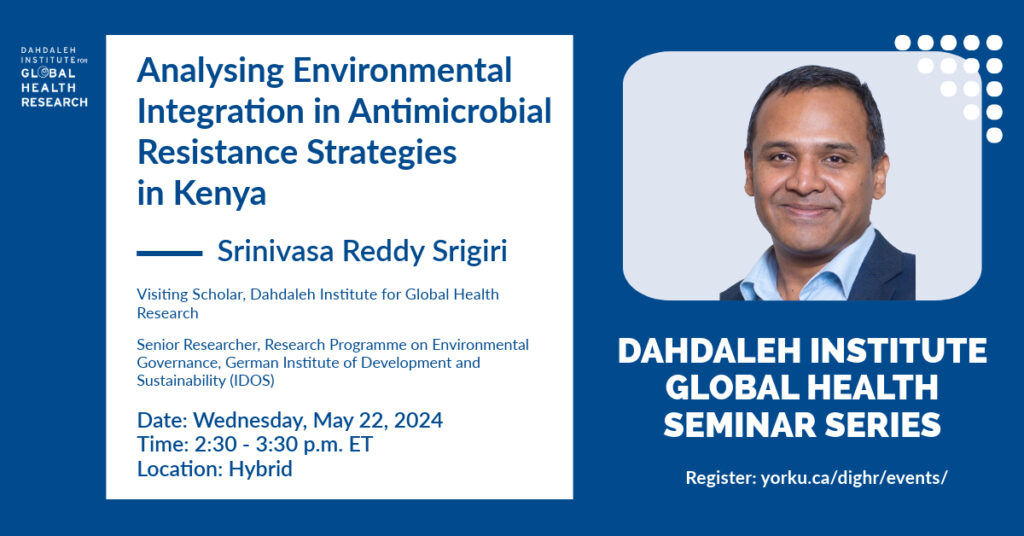Analysing Environmental Integration in Antimicrobial Resistance Strategies in Kenya, with Srinivasa Reddy Srigiri
Increasing recognition of the global burden of antimicrobial resistance (AMR) on public health and resulting economic losses have led to global and subsequent national efforts to prevent and contain AMR. While these strategies emphasise a One Health based approach for governance, effective coordination among actors across relevant sectors, core principle of the approach, seems elusive, risking the effectiveness and sustainability of the mitigation strategies. Further, despite the wide acknowledgement of the critical role environmental resources play in the emergence and transmission of AMR pathogens, the first wave of national strategies have largely bypassed the design and implementation of measures to control environmental AMR. Systematic analyses of governance of AMR mitigation are scarce and have only begun recently, which nevertheless show that majority of the countries studied, especially the low and lower-middle income countries, did not even have an environmental surveillance component. Therefore, the study aims – (i) to understand existing institutions and governance mechanisms for integrating the relevant sectors and levels, (ii) identify potential barriers of cross-sectoral coordination and especially the integration of environment sector, and (iii) explore potential solutions of how to overcome such barriers in order to sustainably contain and prevent AMR development and spread through a OH approach.
The study applies a qualitative case study approach, focusing on AMR governance in Kenya and analyses from a polycentric governance perspective adapting Elinor Ostrom’s Institutional Analysis and Development (IAD) framework. Data analysed included primary and secondary literature pertaining to the topic and the case study region and transcribed semi-structured interviews with key informants from human health, animal health, environment sectors, at national and county levels.
Preliminary results from analysis show that the governance of AMR in Kenya is fragmented across multiple sectors and legislations, often incoherent and even conflicting with each other. The coordination mechanisms at the national and county levels established under the national action plan (NAP) for AMR did not effectively integrate the environmental dimension, thereby missing components of AMR stewardship and surveillance for environment. Asymmetrically distributed information and resources negatively affect coordination among multi-sectoral actors.
It is crucial to overcome the key barriers for effective coordination, namely policy incoherence across sectors and asymmetries in distribution of resources for AMR mitigation across sectors. Besides including an integrated surveillance component across three relevant sectors in the new NAP, it is crucial to embed the new mandate of AMR surveillance and regulation within the existing framework of environmental governance, and arrangements for developing appropriate capacities of relevant actors in different sectors.

Speaker Profile
Dr. Srinivasa Srigiri received his PhD in Agricultural Economics from the Humboldt University Berlin in 2010. His primary research interests involve governance of natural resources, sustainability transformations in rural and agricultural sectors, and strategies for climate adaptation at national and subnational levels. Since August 2019, he holds a position as senior researcher within the Research Programme on Environmental Governance at the German Institute of Development and Sustainability (IDOS). Prior to joining IDOS, he held research positions with the International Crops Research Institute for the Semi-Arid Tropics (ICRISAT) in India, and Institute for Advanced Sustainability Studies (IASS) and Humboldt University Berlin in Germany.
Register below and join us on Wednesday, May 22, at 2:30 p.m.
RSVP
This event registration has closed.

